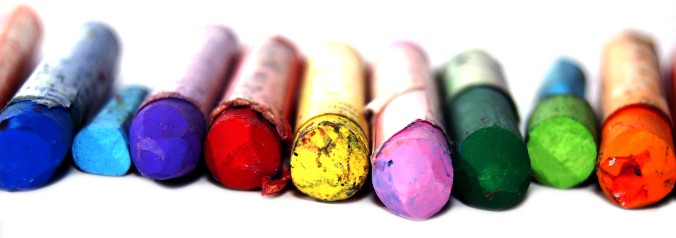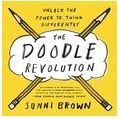In Support of the Doodle

One of my favorite books to give to people is Sunni Brown’s Doodle Revolution. It is a fun and easy read that gives great tools and examples of how you can incorporate productive doodling in your day to day life and with your work teams. Doodling helps you look at challenges in a different light and unlock your creative problem solving skills.
Why the Doodle?
George Washington, John F. Kennedy, Frank Gehry and Bill Gates are just a few well known doodlers. In her book, Sunni Brown, outlines WHY doodling is something we should all try do to more.
Doodling…
- Supports deep, creative problem solving and innovation.
- Is known to be one of the easiest, most accessible, most relaxing ways to not only “be here now” but to slow the mind and allow it to breathe in order to process and integrate information.
- Promotes concentration and increases information retention by up to 29%
- Ignites four learning modalities—auditory, linguistic, kinesthetic, and visual—and dramatically enhances the experience of learning
- Not only helps people understand concepts through simple drawing, but it sets the stage for innovative and divergent ways of thinking.
Sunni Brown also makes the case for doodling in her 2011 TED talk titled Doodlers, Unite!
The Basic Doodle
In Sunni Brown’s book she details different exercises that you can do to help hone your doodling skills. She takes you step by step through the doodling process and gives you tools to help you make the most of your doodling efforts.
One quick and easy exercise is the called Doodle Bomb. For this exercise you ‘hi-jack’ a magazine ad and doodle bomb it. For example if the advertisement is of a fisherman on a boat you could draw him catching an elephant instead of a fish. Or you can change the letters on the page with a doodle to make them say something amusing. The sky is the limit, just get creative and put pen to magazine.
The Infodoodle
Beyond the basic doodle is the Infodoodle.
Infodoodling: Harnessing the power of the doodle and visual literacy to drive innovation, creativity, problem solving and more.
There are three types of Infodoodling:
Personal Infodoodling: In your notebook as you are listening to a lecture, meeting or brainstorming
Performance Infodoodling: Writing or drawing auditory content on a large scale for an audience to see while the content is streaming live from a panel or presenter
Group Infodoodling: People work together to solve a specific challenge using a sequence of activities inside a visual thinking process.
Sunni Brown gives examples and exercises for all of the types of infodoodling. She takes you step by step through the process of incorporating doodling into your workplace to help you and your team transform the way you think in a group environment.
Join the Doodle Revolution
I encourage you to join the Doodle Revolution and start embracing the power of the doodle!
Check out Sunni Brown’s website
Doodle Revolution is available on Amazon
Happy Doodling,
Sara Dougherty
sara@clearworks.net
